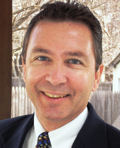 By Scott Kriner, Green Metal Consulting
By Scott Kriner, Green Metal Consulting
The International Green Construction Code (IgCC) is undergoing modifications in its 3-year code development cycle in 2014. IgCC is just one code of a suite of codes administered by the International Code Council (ICC).The IgCC is an overlay code to be used along with the building, residential, plumbing, or electrical codes. It is also a model code, meaning that once it is approved by ICC, the 2015 edition of IgCC can be adopted (or not adopted) by local jurisdictions if they desire.
Did you ever wonder who is responsible for the codes that we all adhere to. A glimpse of the submitted 600+ proposed changes to the existing IgCC reveals among many others, the following organizations introducing changes in 2014: Global Cool Cities Alliance, City of Seattle, Target Corp, Steel Framing Alliance, Metal Building Manufacturing Association, American Iron and Steel Institute, Urban Green Council, National Institute of Building Science, Vinyl Siding Institute, Asphalt Roofing Manufacturers Association, US-EPA, Cool Metal Roofing Coalition, Extruded Polystyrene Foam Association, American Architectural Manufacturers Association, American Institute of Architects, Portland Cement Association and Structural Building Components Association. In addition to the submitters of proposed changes, there are countless individuals and other organizations that will either verbally support or oppose the changes.
The topics that will be discussed at the upcoming code hearing from April 27-May 2 in Memphis include zero energy performance, life cycle assessment provisions, heat island mitigation, cool roofs, construction waste management, recycling contents, acoustics, energy conservation, and resilient building practices. In a way, the IgCC is a codified version of the USGBC’s Leadership in Energy and Environmental Design (LEED) program. In fact, the initial version of IgCC in 2012 was developed by ICC with cooperation from USGBC, IES, ASHRAE, ASTM and AIA.
Every proposed code change must include a rationale statement. The proposed changes are collected and made available to the public in advance of the first hearing. At the Memphis hearing, the submitters of the changes will introduce the change, and then allow for those who support the change as well as those who oppose the change to speak. A Code Committee hears all of the statements and then renders their own discussion and vote on the specific proposed change. In some cases, a vote from the floor can over-rule the Committee’s action if there is enough support.
In some ways, the process is similar to the creation of legislation. Some often say that the process is like watching sausage being made. Most of us would agree that it is better to eat and enjoy the sausage than to actually witness how it is made. Likewise for code development, hours of debate can often take place over the use of one word in a section of a code. An example is a provision for regional materials defined as those that are “extracted, harvested, and manufactured” within a certain distance of a project site. Changing the word “and” in that definition to “or” makes a significant difference in what products can and cannot comply. Hence, debates and rationalizing the use of either word can go on for several cycles of change.
Fortunately for our industry, there are many who are skilled in helping to make the sausage. These individuals work hard to modify the codes for the good of the building construction industry. They win some battles, but lose some too. With a three-year staggered cycle of multiple codes being developed, it seems like a never-ending process. But progress is made and improvements in materials and systems are brought into the construction industry to not only keep our buildings structurally sound and safe, but also sustainable, durable, and environmentally responsible.